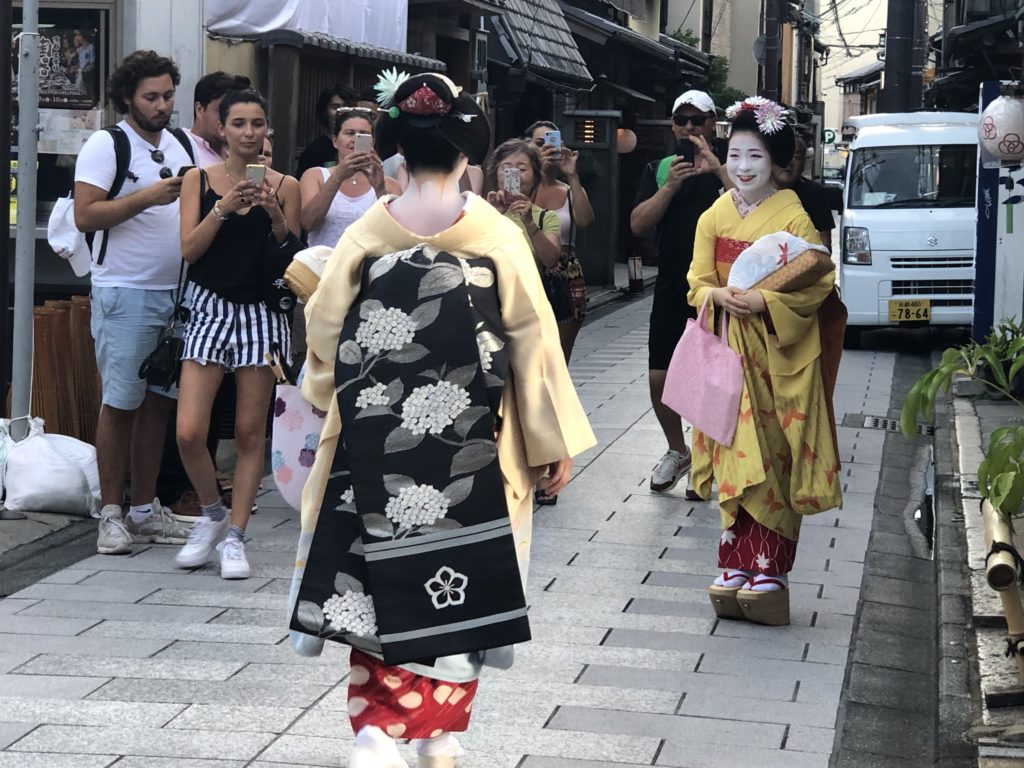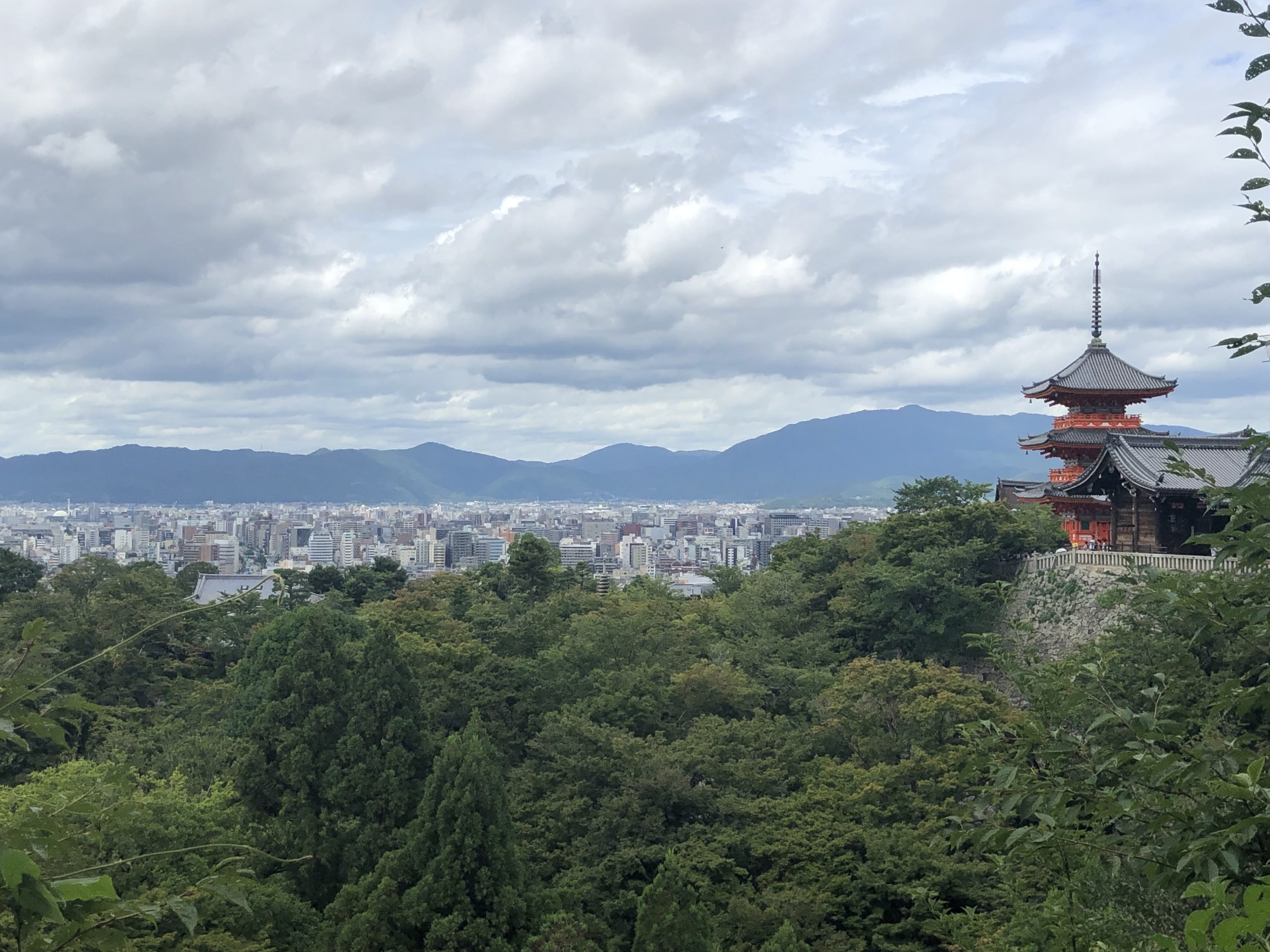In the dense, dark-green forests of Kyoto’s eastern hills lies the magnificent Kiyomizu-dera, one of the most impressive Buddhist temples in Japan. It dates back to about 780 AD, although the core structures standing today were completed in the 1630’s – on the orders of the third Tokugawa shogun.
On approach, you pass plenty of shops selling Japanese crafts, food, and souvenirs. It’s also possible to rent traditional clothes called “yukata”, a casual summer type of kimono (of which there are many varieties), while wandering around this part of the city.

At the front of the temple complex is the really iconic Nio-mon Gate – a grand structure measuring 10m wide and 14m tall. To its right is the equally impressive Sai-mon (West Gate), considered a gateway to paradise. As you can see from the photo below, this is a popular tourist place and is best visited early in the morning to avoid the crowds.
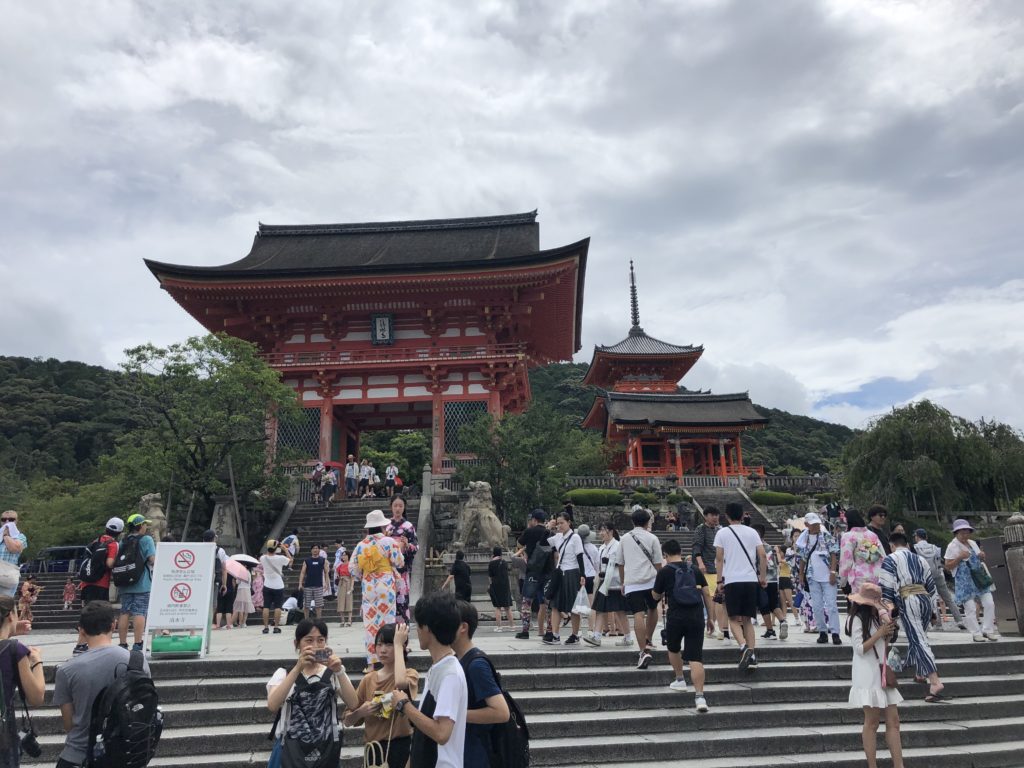
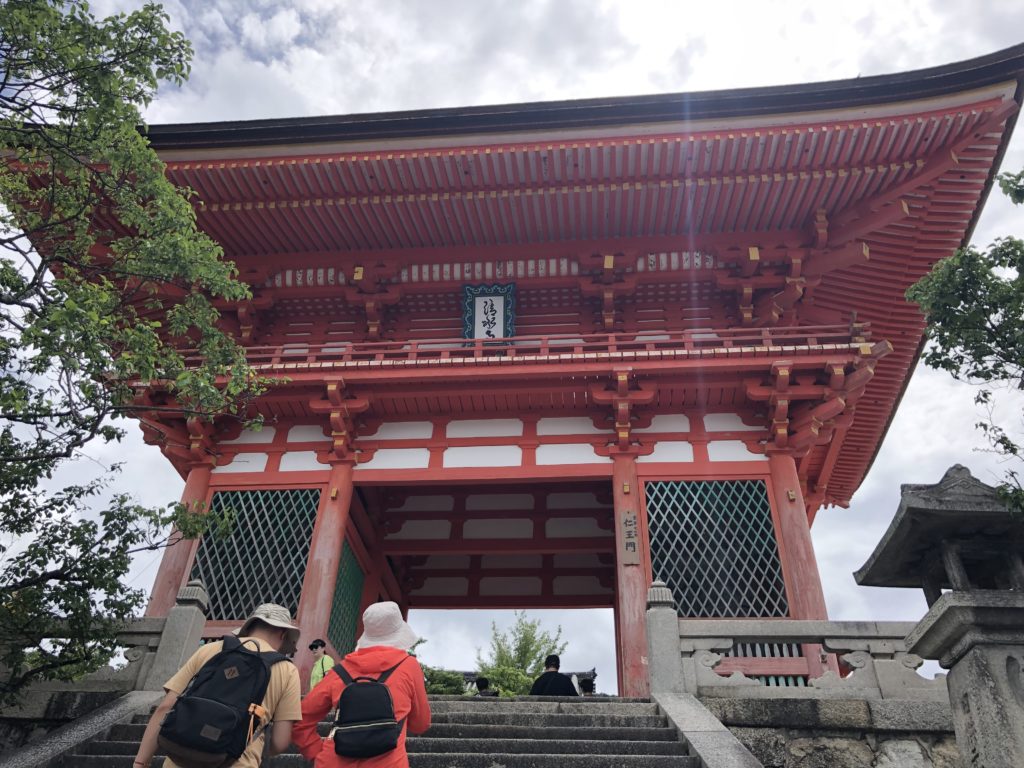
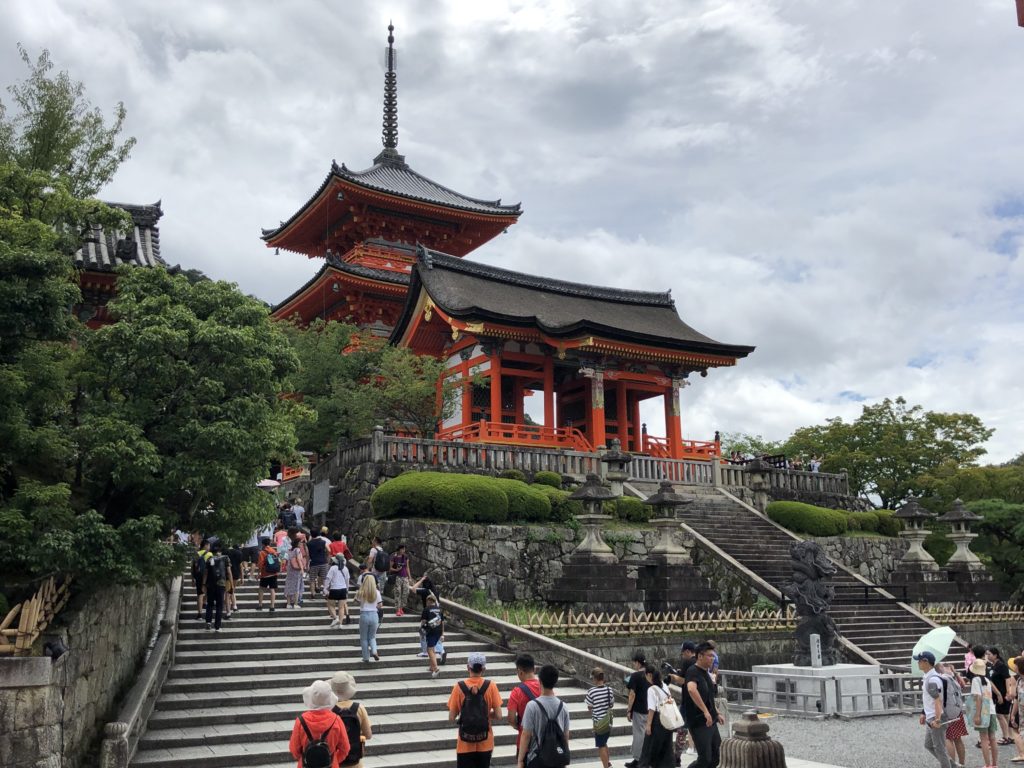
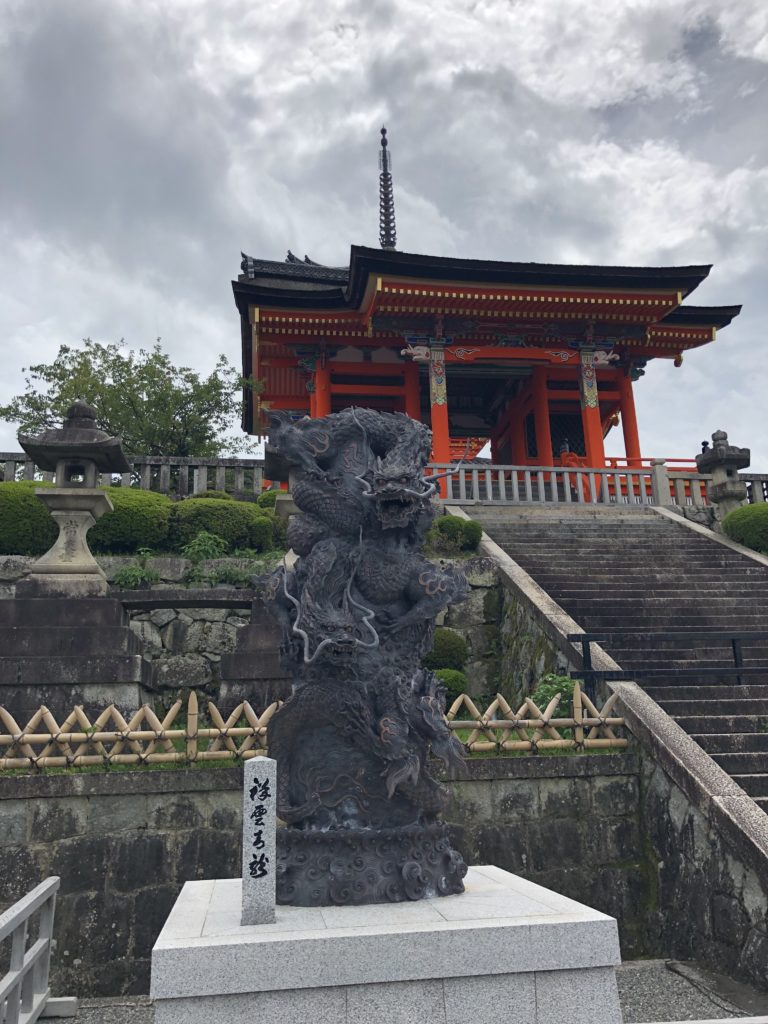
You next arrive at the Zuigu-do Hall that houses a Buddhist deity that is supposed to kindly hear the desires & aspirations of each and every person.
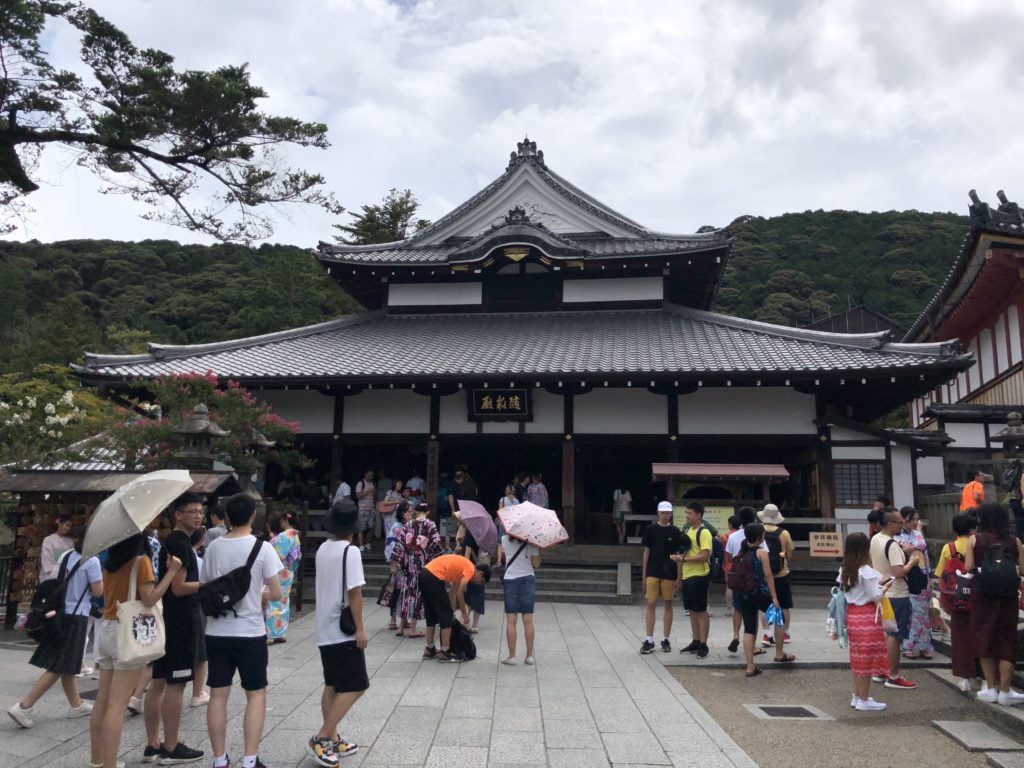
You then buy a ticket and pass into the Main Hall (“Hondo”) of the complex. Unfortunately, as a result of repair works in the lead up to the Tokyo Olympics, the entire Main Hall looks like this (viewed from the back of the complex):
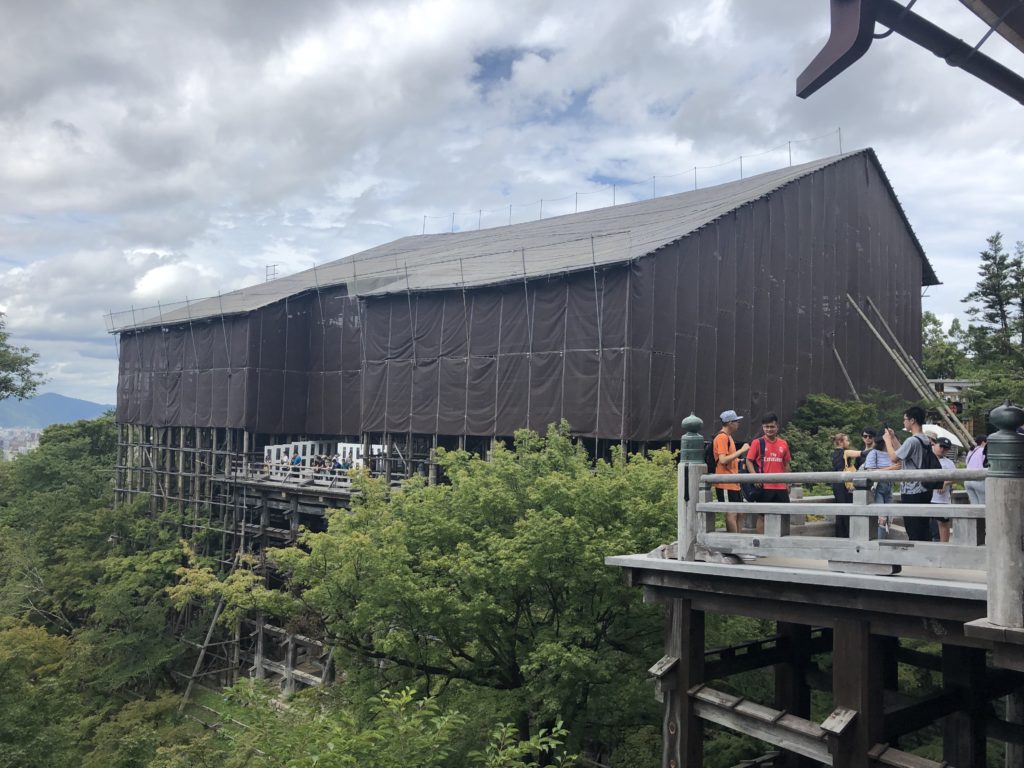
The tent of scaffolding hides a beautiful Main Hall that is set up on a tall forest of stilts. Without any nails, the structure is all thick, dark-brown beams that elevate the temple above the tree line, all without alienating it from its surroundings. It is awesome – some pictures from inside the temple:
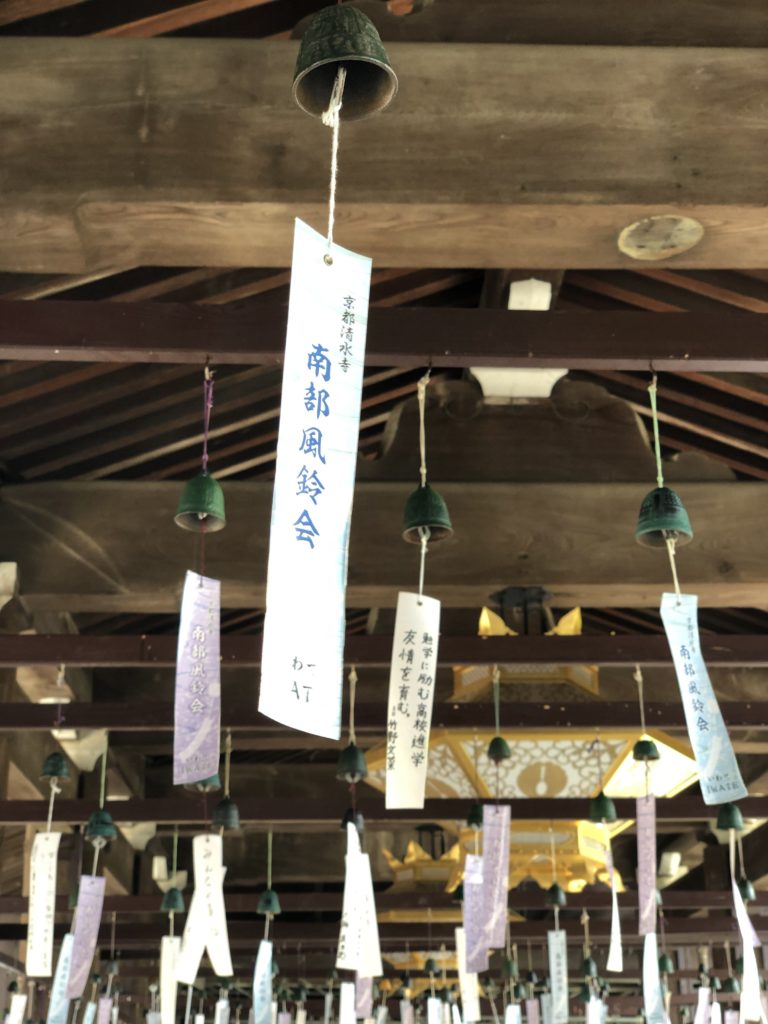
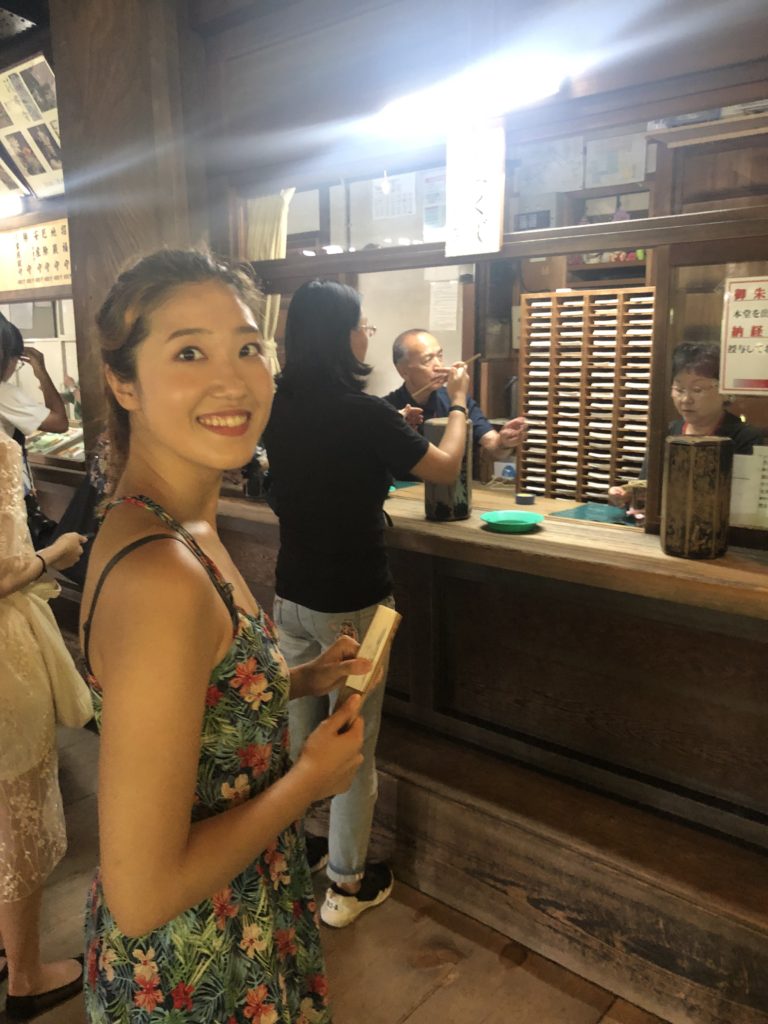
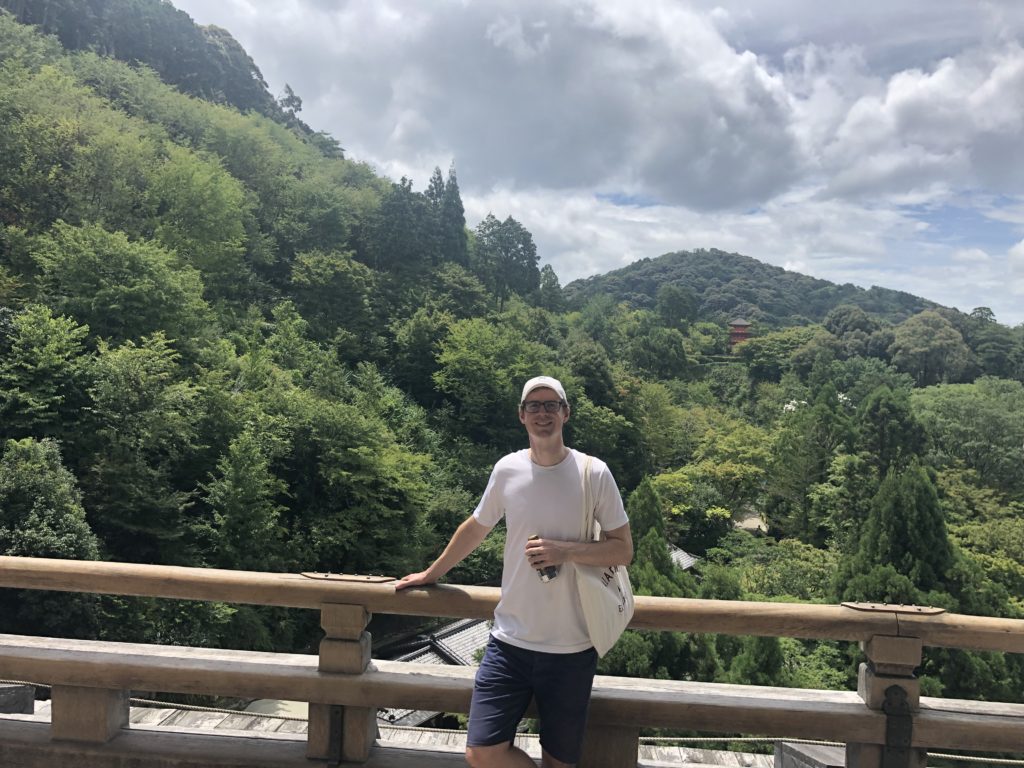
You exit the Main Hall building and follow the path that leads you past the Okuno-in Hall, from which you get some amazing views of Kyoto:
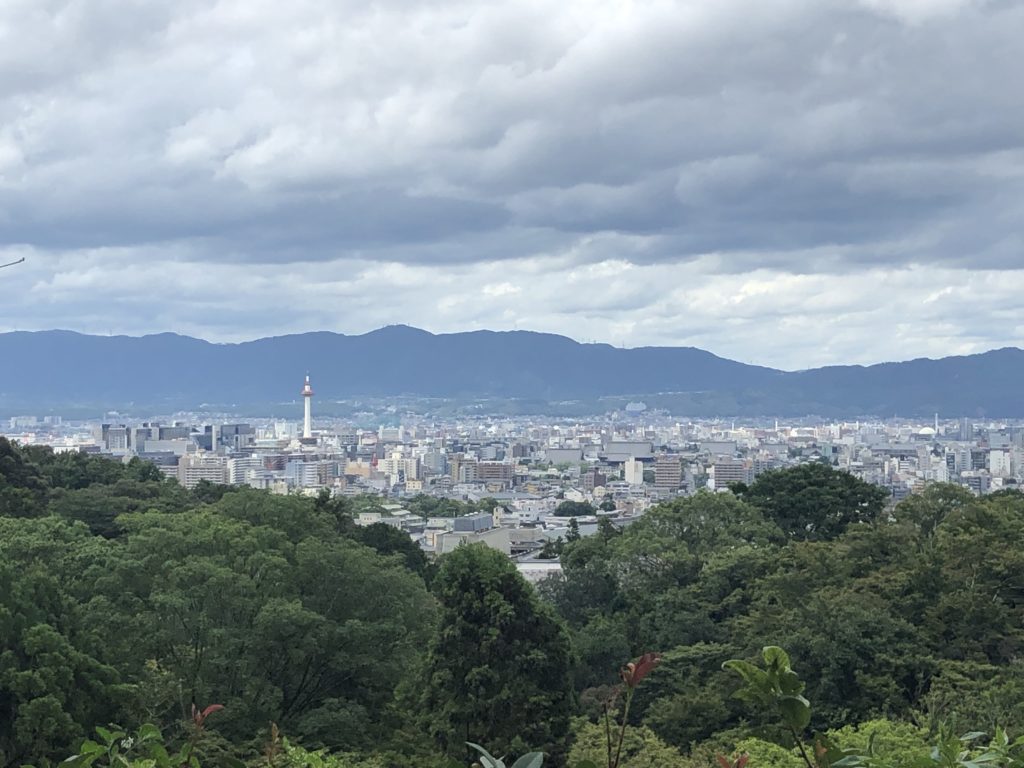
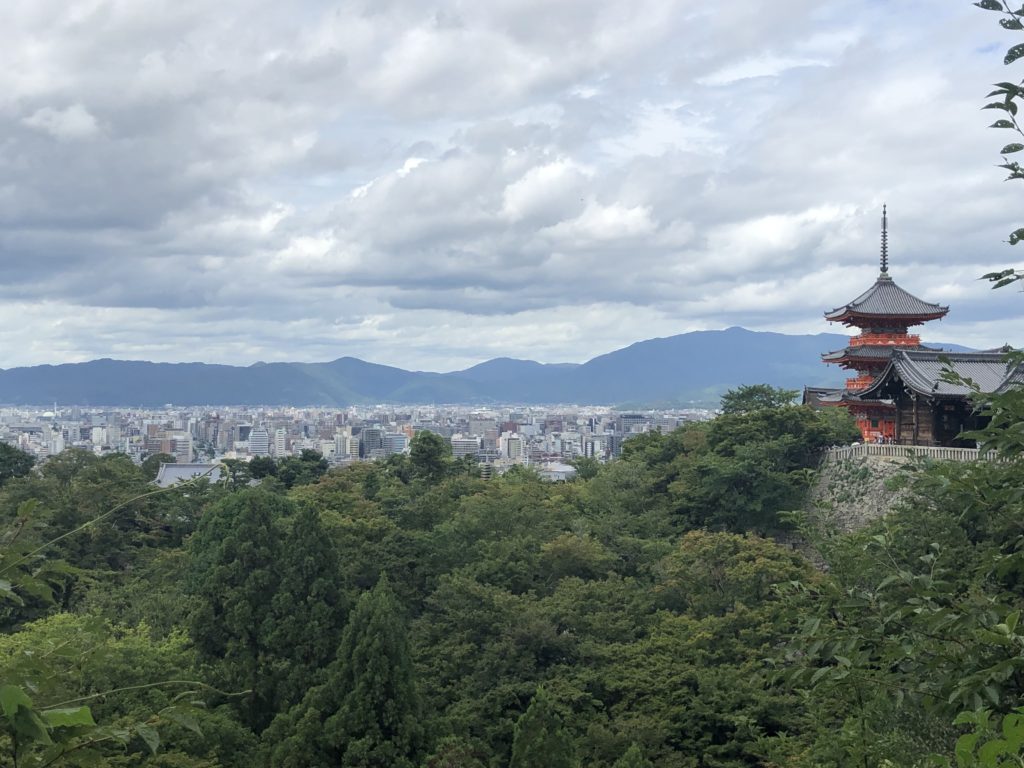
You continue past the hall, along a picturesque path through the forest which doubles back on itself and takes you down to a lower level of the complex. Here you can find the Otowa Waterfall. Note that the name of this complex, “Kiyomizu”, means clear/pure water (while “dera” means temple). The name derives from the pureness of the waters that run off the nearby hills, which have been directed into the three-stream Otowa Waterfall structure.
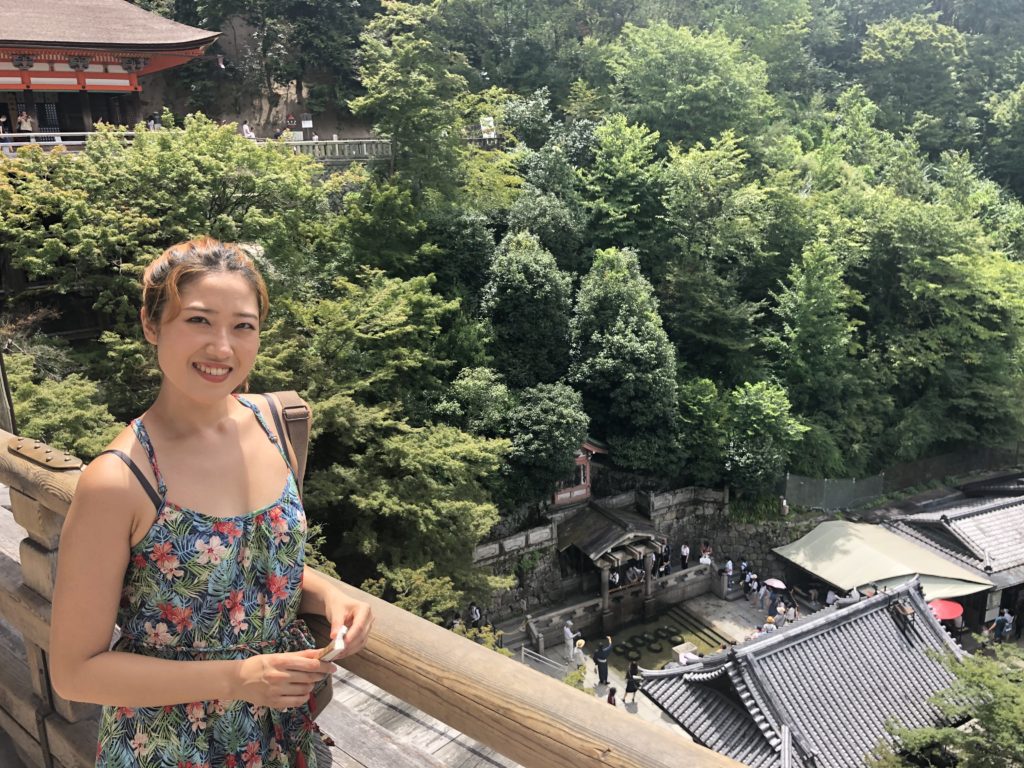
The thing to do here is grab one of the long iron ladles, catch some of the falling water, and have a drink. It’s supposed to make wishes come true, act as purification, have life-extending powers – basically, it covers all the bases.
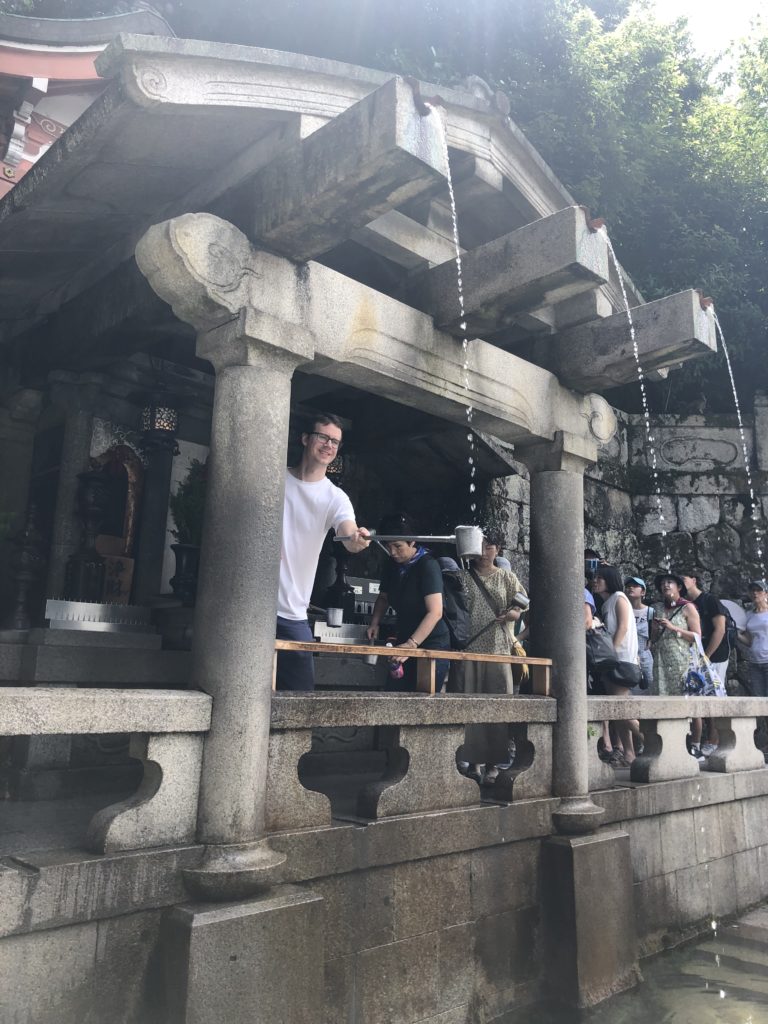
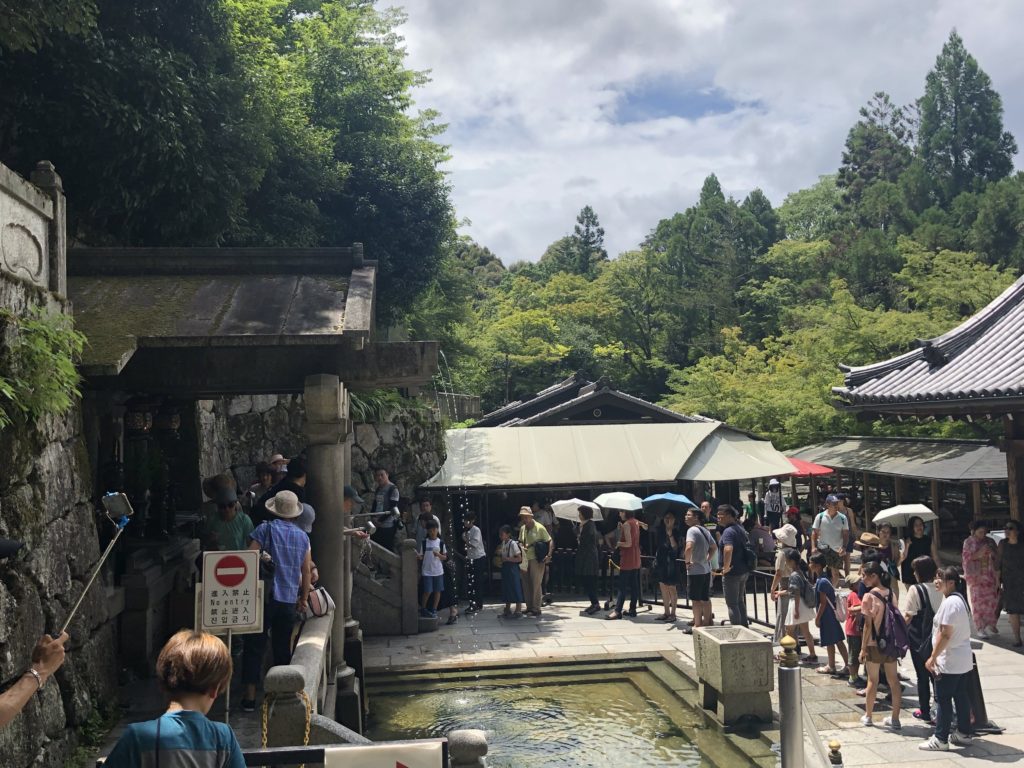
Carrying on down the path a little further, you exit the temple complex at the same place that you entered. From here, it is a really pleasant walk down the hill towards town. Along the way, you pass by all sorts of interesting shops and scenic alleyways. It’s location on a hill means that a visit to Kiyomizu-dera involves quite a lot of walking. We’d recommend taking a taxi to the temple (stopping as close to the complex as they’d let you), so that you save the walking for the downhill trip back towards town.
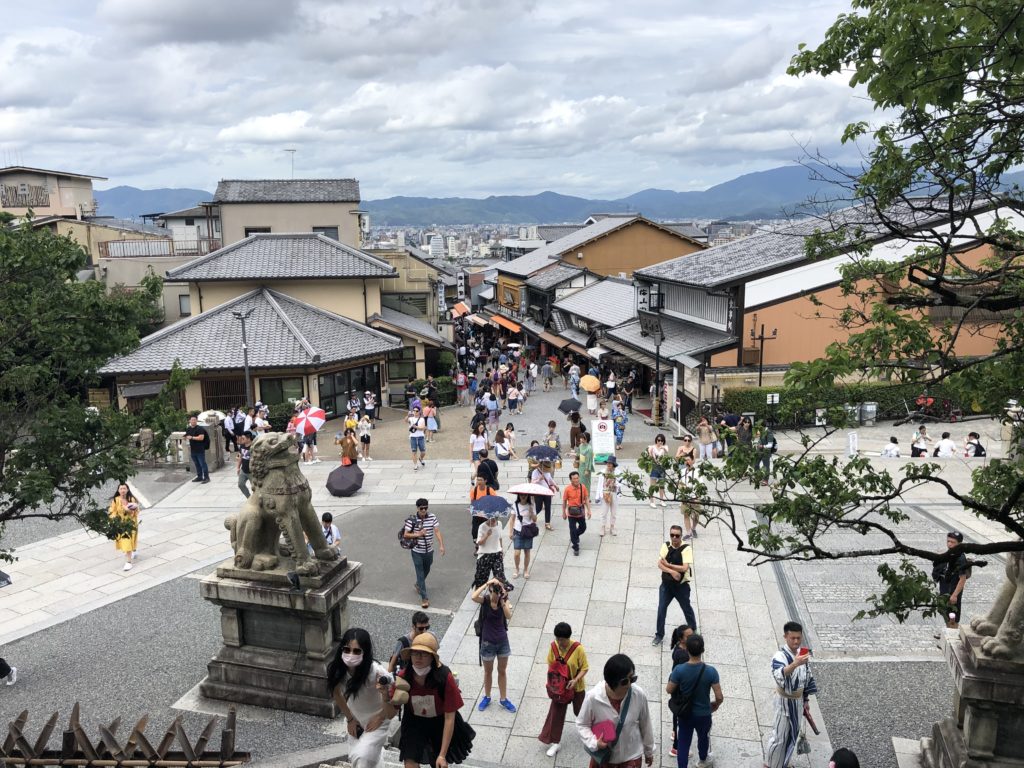
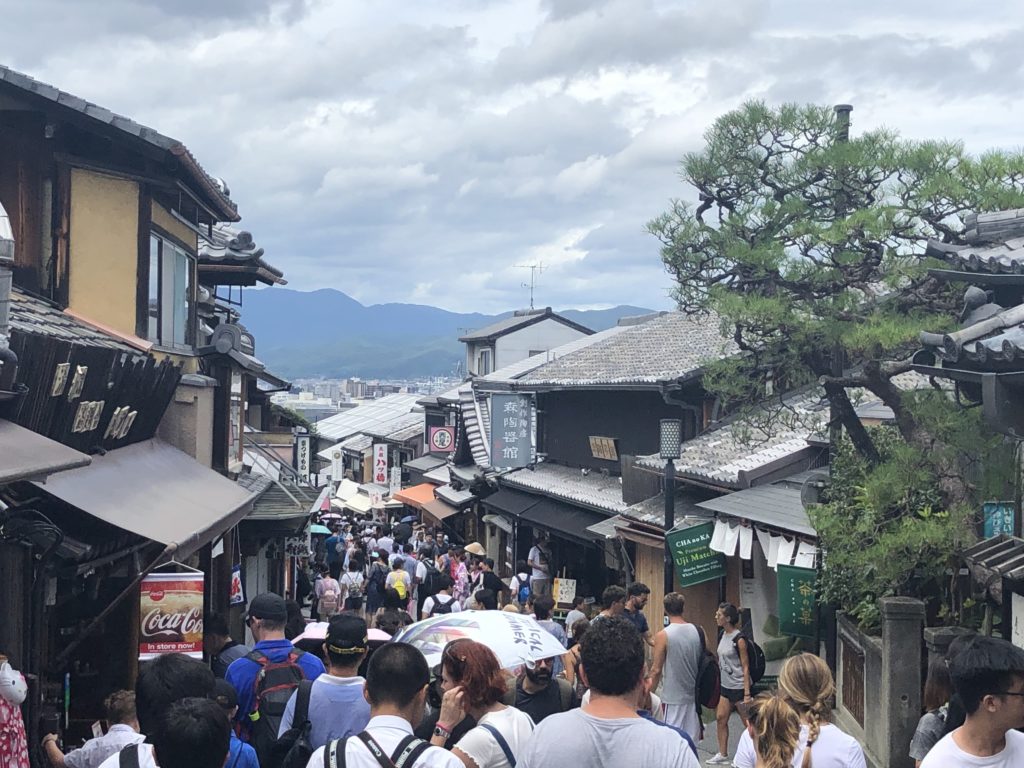
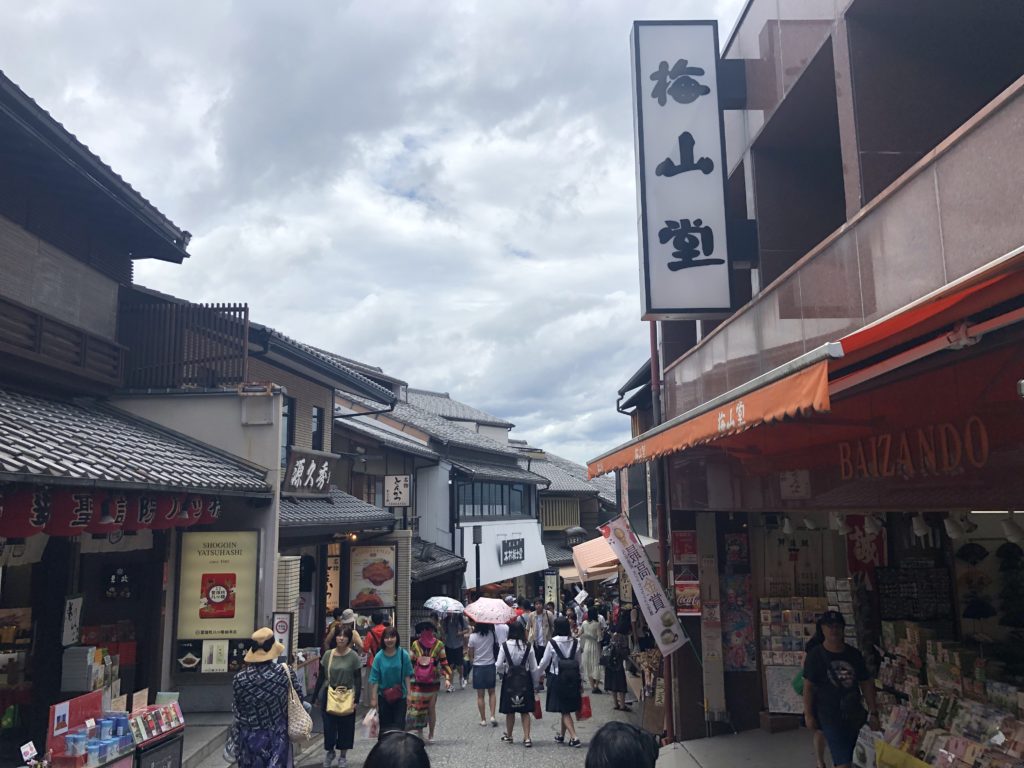
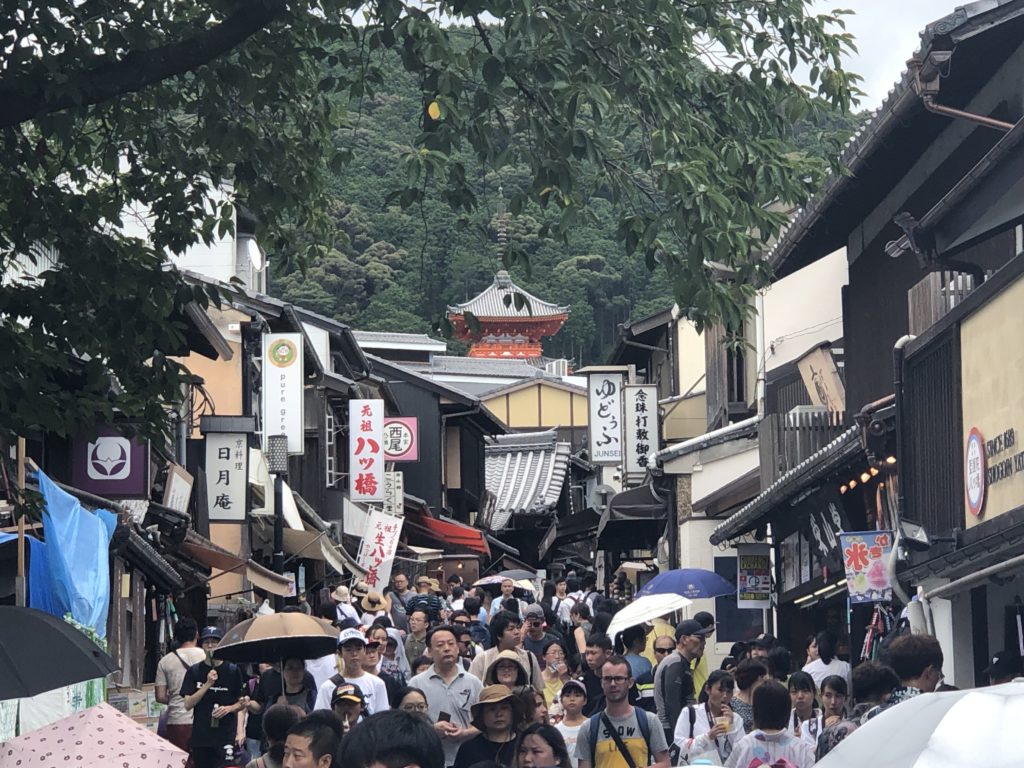
Between Kiyomizu-dera and the Kamo River, there are plenty of interest temples, shrines, and scenic spots within walking distance. We had read about one street that was a great place to spot “geisha”. Outside Miyagawacho Kaburenjo (Mai Hall), a performing arts theatre, we managed to do just that.

A geisha, which means “performing artist”, is a woman who entertains people by performing art, dance, song, or music, and wears a distinctive combination of kimono and snow-white oshiroi makeup. Contrary to popular belief, geisha are not prostitutes (known as “oiran”), although apparently the lines blurred at times in the past and the two groups would traditionally wear similar attire. Walking around the neighborhood of Gion, it would appear that geisha culture is alive and well in the city of Kyoto.
